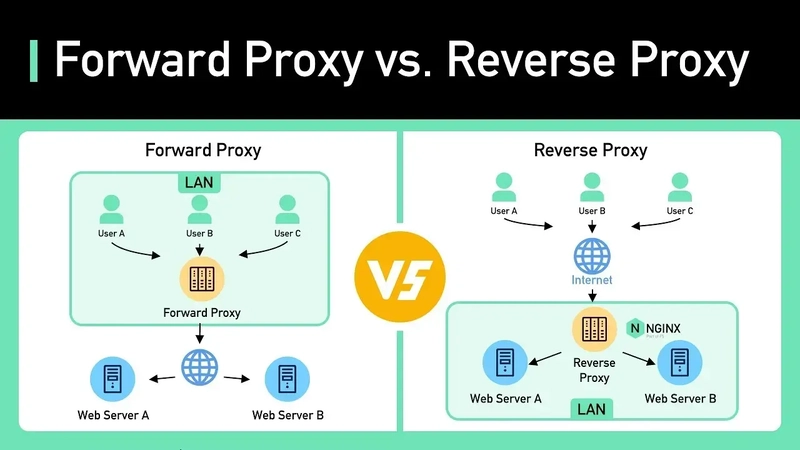When we browse the internet, a lot happens behind the scenes. One such hidden hero is the proxy. Whether it’s keeping your identity safe, speeding things up, or managing requests, proxies silently work in the background to make your online experience smoother. Let’s break it all down.
What Is a Proxy?
A proxy is like a middleman between you and the internet. Instead of directly connecting to a website, your request first goes to a proxy server. That server then talks to the website on your behalf.
Imagine you’re at a party and want to ask someone a question, but instead of going directly, you ask your friend to pass the message. Your friend is the proxy.
✅ Why Use a Proxy?
There are many reasons to use a proxy:
- To hide your identity (IP address)
- To filter content (like blocking social media at work)
- To speed up browsing using cached content
- To add a layer of security and control over traffic
📌 Now, proxies come in two main flavors: Reverse Proxy and Forward Proxy. Let’s explore both.

What Is a Reverse Proxy?
A Reverse Proxy sits in front of one or more servers and handles requests from clients (like users) to those servers.
Think of it like a receptionist in an office. When visitors come in (users), the receptionist decides which employee (server) should handle the request.
✅ Why Use a Reverse Proxy?
- Load Balancing – It distributes traffic to different servers to avoid overload.
- Security – It hides the internal structure of your servers from outsiders.
- Caching – It can store frequent responses and send them faster.
- SSL Termination – It handles HTTPS encryption, reducing work on backend servers.
What Is a Forward Proxy?
A Forward Proxy sits in front of the client (user) and makes requests to websites on the user’s behalf.
Imagine you’re in a country where a website is blocked. You tell your friend in another country to access it and send it to you. That friend is acting as your forward proxy.
✅ Why Use a Forward Proxy?
- Bypass restrictions – Like accessing blocked websites.
- Hide your IP address – Helps with anonymity.
- Content filtering – Schools and offices use it to block certain sites.
- Monitoring – Organizations track employee usage.
Differences Between Forward and Reverse Proxy
Feature Forward Proxy Reverse Proxy
Who uses it? The client (user) The server side
Purpose Access control & privacy for users Load balancing, caching & security
Hides identity of The user The server
Example Use Case Accessing a blocked website Managing multiple backend servers
Why Are Proxies Important? (In DevOps)
In DevOps, proxies are crucial for:
- Security – Hide backend servers and control access.
- Load Balancing – Distribute traffic across services.
- Performance – Cache content to speed up responses.
- Build Control – Restrict internet access in CI/CD.
- Microservices – Enable smooth, secure communication.
Conclusion

Proxies aren’t just networking tools — they’re a core part of modern DevOps. From security to scalability, proxies help teams build reliable and efficient systems.
✅ Forward Proxy: Acts on behalf of the client (user). It hides the client’s identity from the server.
✅ Reverse Proxy: Acts on behalf of the server. It hides the server’s identity from the client.
In the next post, we’ll explore hands-on proxy setups and real-world use cases using NGINX. Stay tuned!
Connect with me on Linkedin: Raghul M

